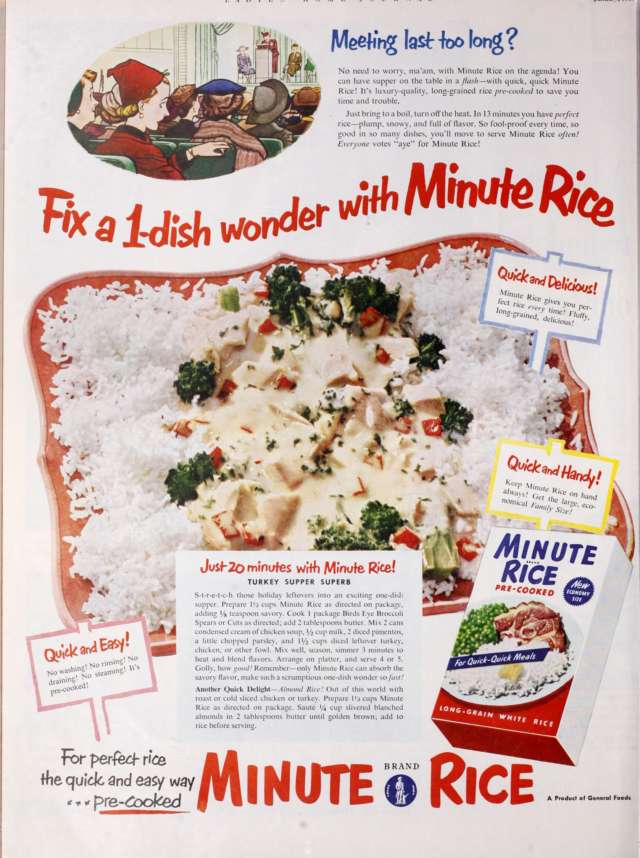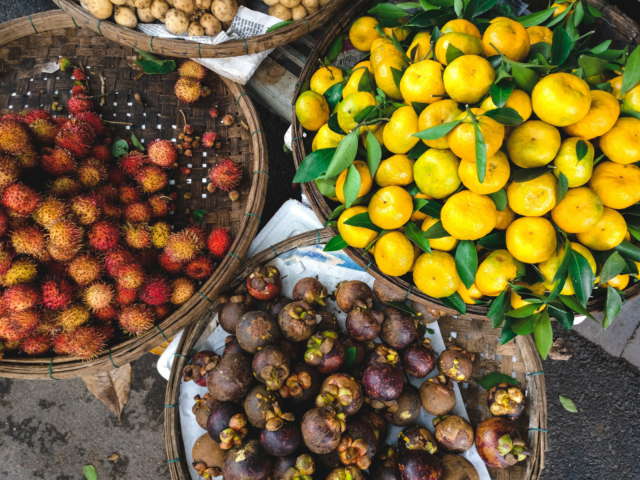Freud’s Nephew, Dole Pineapple, and Lessons from Wuhan Cuisine: A Twisting and Turning Article About Design and the Mind
Kevin explains how Sigmund Freud’s nephew invented propaganda, why Dole Food Company taught Americans how to cook, that Wuhan may have the best breakfast in the world, and, most importantly, what we can learn from all of this.
In the third and last of a series of posts about ethics and design, I explain how the history of propaganda and recipes relate to design and the mind.
Learning, Design, and Rerouting the Mind
Some advertising is a subset of design. But rather than designing a thing (like an image), they are trying to design the way a person thinks.
One of my favorite documentaries of all time, a British television documentary called The Century of the Self,1 explores the various ways governments and corporations used Freudian theories in the 20th century to impact the minds of the general public. Not many know that Sigmund Freud, one of the most famous scholars and the controversial founder of psychoanalysis, had a nephew, Edward Bernays, who brandished his uncle’s theories to make a lot of money as perhaps the first public relations expert. Some consider him the “father” of public relations.
Bernays, who wrote a well-intentioned book titled Propaganda believed whole-heartedly that a benevolent class of puppet masters who controlled the mind of the masses were key to a strong democracy. Seriously, it is some wild stuff. His focus was on impacting the subconscious decision making of the masses. His tools? The media. Tasked with marketing Lucky Strike cigarettes to women, he hired a group of hip and alternative women to stage a cigarette-smoking demonstration during a national parade, calling those cigarettes “torches of freedom.” He also pushed the use of green color in high fashion shows and window displays to subconsciously link the green color of the Lucky Strike box to glamour.
I discuss Bernays because he demonstrated, with some degree of success, that thought patterns can be intentionally altered. In other words, we as humans search for patterns and connections. This search for patterns can be hacked when marketers or those in public relations trick us into finding patterns that are not really present (e.g., green is not inherently glamorous, cigarettes do not provide freedom).
Less disturbing examples of how marketing can design our thinking center around recipes. Recipes played an important role in changing how Americans cooked. This change also changed how American consumers spent money on food. The next section illustrates how this type of stealth advertising affected and designed my own behavior.
Recipes and the Mind
When I was twenty, I moved to Wuhan, China where I lived for four years. The food was outstanding. Breakfast in Wuhan consists of a Pad Thai-like noodle dish where local cooks mix reboiled noodles with a hearty scoop of peanut butter or sesame seed butter, some pink-pickled turnips, a pinch of MSG, and spoon of chili oil. This tasty dish, aptly named “hot dry noodles,” satisfies morning hunger, provides fuel for the morning, and also kick starts the day with a little spice. The city is wild for this breakfast. My local spot had a line out the door from about 6:30am to 10am everyday. The first time I had a bowl I was sold. I left wondering why I ever craved bland raisin bran (for a weird aside, I recommend reading about the history of bran cereal and the Kellogg sanitarium).
Living in Wuhan led me to reexamine other food related assumptions including how to live a healthy life. For example, some of my Chinese friends questioned why I would want to char meat or vegetables when such charring is a known carcinogen. They also questioned why I closed the windows and used the air-conditioner all the time instead of accepting some temperature discomfort in exchange for fresh air. These types of cultural disconnects were teaching moments. I questioned some of my assumptions and reflected on why or how I learned those assumptions. In many cases, the answer was that I learned how to live life from advertising. Or I learned how to live from my parents who learned from advertising.
My parents, as a Midwestern couple in the 1960s and 70s, learned to make a lot of “hotdish” or casserole. Typically this meant mixing ground beef with a can of cream of mushroom soup, a can of corn, and a few other ingredients here and there. As Julia Heffenfinger writes in The History of Hotdish, a true hotdish has a certain anatomy2:
Anatomy of a Hot Dish
Protein: Ground beef, shredded chicken, canned tuna
Vegetable: Canned corn, canned green beans
Starch: Wild rice, macaroni, mashed potatoes
Sauce: Canned cream of anything soup: mushroom, celery, chicken, cheddar
Crispy Topping: Tater Tots, French’s French Fried Onions, chow mein noodles, crushed potato chips
As the anatomy shows, the ‘bones’ of hotdish are prepackaged, canned or frozen goods. They are not built from raw ingredients, fresh vegetables, or processed staples like flour and oil.
Before I moved to China, I never thought about the anatomy of my home cooked meals. I did not realize that the “bones” of my meals consisted of canned vegetables and premade sauces. To me, making spaghetti meant boiling some pasta and adding a jar of pre-made, preserved spaghetti sauce. In fact, I considered myself a pretty good spaghetti cook because I added white wine, honey, and a pinch of ground Szechuan pepper to my bottled sauce. I never even thought about making spaghetti sauce from ripe tomatoes.
How did I learn to cook this way? Recipes taught me. Or I learned from my parents and recipes taught them. In fact, recipes—which are often created or influenced by food companies—changed the way I think about cooking. Recipes, which called for exact measurements and specific products, influenced an underlying belief System that still perpetuates for me today. I still rely on pre-made sauces and spice packets. I make pumpkin muffins by doctoring a Betty Crocker muffin mix, despite the mix consisting of ingredients that I have at home. I make Churrasco steak using an Urban Accents spice packet, despite the mix of ingredients often mirroring what I have in the fridge. Despite trying to shake this habit, I still forget that there are other options because I learned to cook with prepackaged products.

Living in Wuhan exposed some of my underlying beliefs. I never saw my neighbors or friends open up a cooking magazine, read a recipe off the side of a container, open up a recipe book, or pull up a recipe from the web (though I think that may change with the next generation). Recipes were rarely used. My neighbors and friends instead started “cooking” by simply selecting the best looking produce at the market, or seeing what was lying around in the kitchen, then cooking it. “Recipes” were not lists with exact measurements, but rather ideas, often passed down from generations or shared in conversation (including text conversations) with friends.

In a previous article I talked about the TV show Madmen which takes place in the 1960s to highlight that advertisers are designers of a sort—designers of behaviors. Crafting recipes and linking those recipes to certain products is an intentional move, a design move that influenced multiple generations of Americans when they think about cooking. Granted, recipes existed before the influence of advertising. It was already common to share cooking ideas in text (e.g., The Joy of Cooking). However, advertisers saw a way to piggyback on the idea of recipes and to encourage that particular style of thinking about cooking (e.g., following a step by step procedure). The Dole company taught Americans to cook pineapple upside down cake or Hawaiian pie. The Kellogg company put the recipe for Rice Krispies treats on the side of the cereal box. The key idea to understand, though, is not that the companies taught us particular recipes, but rather that companies taught us to think in a different way about food. They taught us to make aspirational food (food that is new to us, food that looks beautiful, and food that is not that easy to make from scratch). They taught us to use particular measurements, particular food products, and particular kitchen tools. They taught us to be inflexible and exact when cooking, a mindset that continues today. Many Americans who learn to love cooking also learn to cook without recipes.
What We Can Learn from Advertising and Recipes
Shaping a mind is a great responsibility, one that should not be “applied” like advertisers. Teachers should not seek to just “make things simple and significant,” because such an influence is shallow. Curriculum designers should not employ the tactics of advertisers to relate elements of the curriculum (like creativity) with “good” or drugs with “bad” (I’m thinking of the D.A.R.E. program in the 1990s). Educators should ultimately seek to create learning environments that encourage complex, nuanced, deep, and conceptual learning. My recommendation is to allow for more complexity. Case studies, ones that do not shy from complexity, provide more accurate fodder for thinking about complicated things. In other words, they help students to understand how things in life may be linked.
However, we also need to be aware of how advertisers have successfully piggybacked on cultural movements to have an influence. As educators and as a nation, we should explore how we can adapt some of the goals of education (e.g., developing creative, persistent, and media savvy students) with some of the current cultural movements (e.g., increasing screen time at home and more video content in general). What this looks like is not obvious, but such movements should not be simply cast aside.
As a final note, in some ways, Bernays’ public relations attitudes have become more troublesome or threatening than ever. We, as a society, need to teach our students to think critically about their assumptions and ‘from whence they came.’ In general, I argue that educators should find ways to have students’ engage with people of other cultures (whether that means students in other countries, from other countries, with different skin tones, or different amounts of family money or different amounts of family debt). In fact, I argue that the more exposure students get to different ideas and complex situations, the more likely they are to shed the simple “truths” pushed by advertisers or public relations officials and the more likely they are to question their own “truths” and their own ways of thinking.

Leave a Reply